
Muffins make delightful breakfast treats and snacks. Adhering to a gluten-free diet does not mean you have to give up your favorite breakfast muffins. Learn to use rice flour mixed with other flours to recreate your old favorites from the recipes you used to make with all-purpose flour.
Selecting Muffin Recipes
You can use rice flour in almost any muffin recipe, but works best in those that call for all-purpose or unbleached flour. Steer clear of recipes that call for wheat germ, wheat bran, barley, oats and other heavier grains. Rice flour is lighter than those grains and absorbs less moisture, so substitutions are much more difficult and require significant trial and error.
Flour-Mix Ingredients
Rice flour is delicious in muffins but needs to be combined with starches and a gluten-replacement to work as a 1-to-1 replacement for all-purpose flour. Choose two or more starches to include in your flour mix, like tapioca flour, cornstarch, arrowroot powder or potato starch. You will also need one gluten replacement, like xanthan gum, guar gum, psyllium husk powder or flaxseed meal. These ingredients bind the flours in your muffins together like gluten would, which makes your muffins moist instead of dry, crumbly and fragile.
Making Gluten-Free Flour Mixes
Rice-based gluten-free flour mix needs to be 60 percent starches and 40 percent rice flour to work as a cup-for-cup substitute for all-purpose or unbleached flour in muffin recipes. If you make 10 cups of flour mix, 4 cups will be rice flour. For the remaining 6 cups, use a variety of starches. For example, you could do 3 cups of tapioca flour and 3 cups of potato starch. You might also combine 3 cups of cornstarch and 3 cups of arrowroot powder. Add in the gluten replacement last. For each 1 cup of mix, you'll need one of the following: 1 teaspoon xanthan gum, 1/2 teaspoon guar gum, 1/2 tablespoon psyllium husk powder or 1 tablespoon flaxseed meal.
Making Muffins
Substitute the gluten-free rice flour mix cup-for-cup for flour in your muffin recipe. Because there is no gluten in the flour mix, there is no danger of over-mixing the batter. Rice flour has a tendency to clump, so mix until you do not see any lumps remaining in the batter. Always use muffin liners with gluten-free muffins, as they are somewhat delicate when they are hot, though they strengthen as they cool. Bake the muffins at the usual temperature. Your cooking time may be a few minutes less or a few minutes more than in the original recipe. When a toothpick inserted into the center of a muffin comes out clean, the muffins are done and ready to be cooled on a cooling rack.
Related Articles

Substitute for Gram or Besan Flour

How to Make Sweet Brown Rice
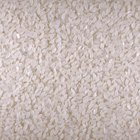
How to Bake With Rice & Potato Flours

How Do I Thicken Blueberries to Make ...

How to Substitute Cocoa Powder for ...
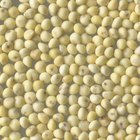
How to Cook Millet Meal
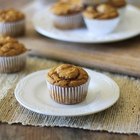
How to Make Pumpkin Muffins

Breading With Baking Soda and Flour for ...
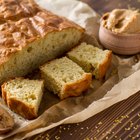
How Many Calories Are in Jiffy ...
Flour Substitute for Muffins

Can I Substitute Bleached for ...

How Long Does Banana Bread Stay Fresh?

Psyllium Husk & Gluten
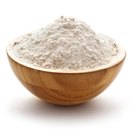
Can Jiffy Baking Mix Be Substituted As ...
6 Easy Gluten Free Dinner Recipes

Can You Make Cupcake Mix Without Baking ...
Baking With Almond, Rice & Coconut Flour

How to Use Oat Flour in a Pie Crust

Can You Use Konjac Flour in Baking?
What Is the Difference Between Cake ...
References
Writer Bio
Anne Kinsey is a Certified Trauma Recovery Coach and missionary, residing in rural North Carolina. She is the founder of Love Powered Life, a nonprofit organization with the mission of creating loving community for trafficking survivors and their families. Anne has enjoyed writing for publications like Working Mother, the San Francisco Chronicle, the Houston Chronicle, Bizfluent and Career Trend. She resides in rural North Carolina with her husband, three children and a house full of furry friends.
Photo Credits
Ablestock.com/AbleStock.com/Getty Images